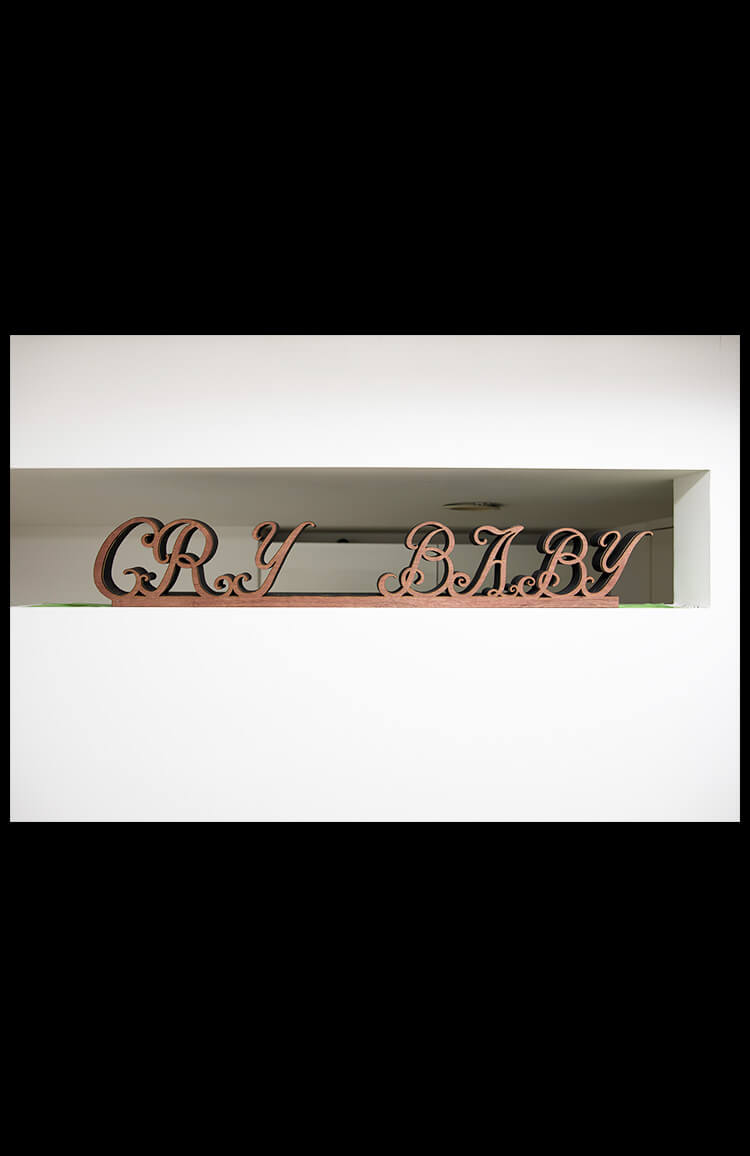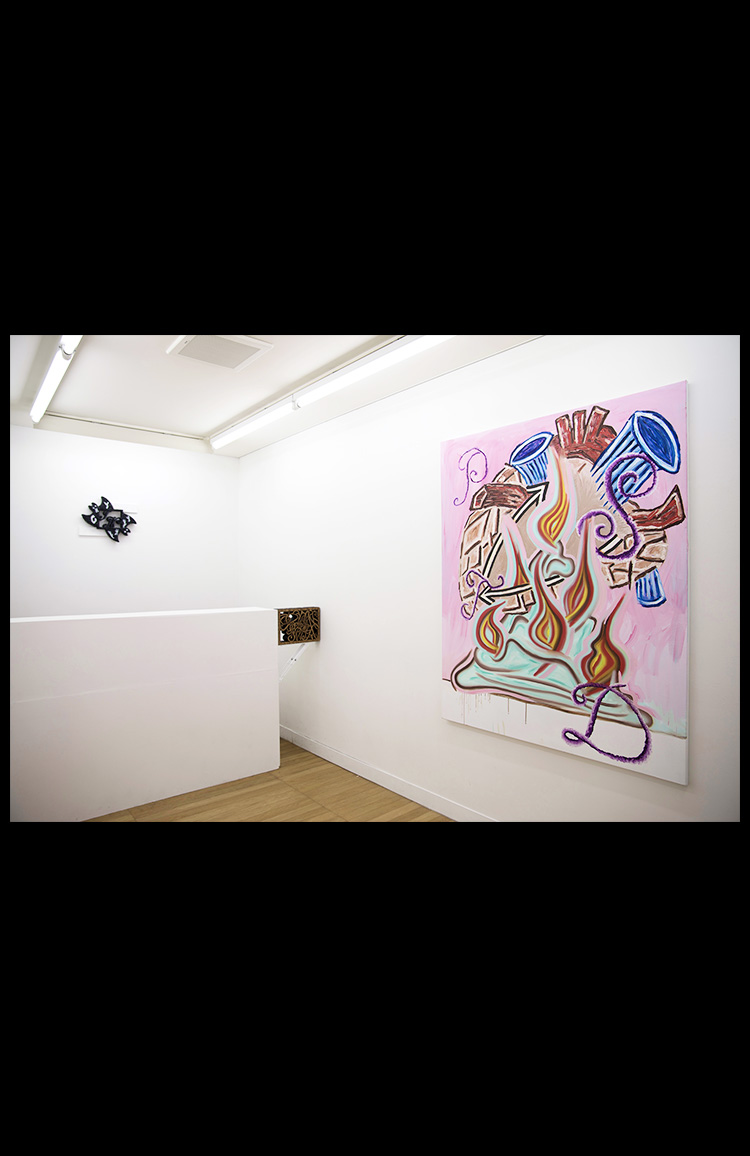IL__Can you talk about how you came up with the exhibition title?
IN__The title of the exhibition, ‘Crybaby’ grew out of a lot of the things I touched on above. When making these works I was thinking a lot about my own personal history; the things I grew up listening to, watching and that, in many ways, shaped my identity. For example, the title of the work ’H.I.M.mmm (my baby’s got a secret)’ is the name of the main antagonist from the Powerpuff Girls, ‘HIM’, a devil in sharp, thigh-high boots, a pink ruff and puffy skirt with a high pitched voice, remixed and fading into the chorus of Madonna’s song ‘Secret.’ I grew up alongside the internet, so, whereas before the kind of music you listened to, for example, might have given an indication of the specific, local community you came from, a lot of the cultural material I absorbed was global.
It was odd because I felt this psychological dissonance between the micro and the macroscopic; I felt a great intimacy with a lot of these characters or things that I loved, and yet I was also aware of a coldness and sense of distance between us - what did I, a white 10-year old girl at a Roman- Catholic convent school in London really have in common with the members of the Wu-Tang Clan, for example? The internet engenders this kind of dissonance. I saw a lot of these artists, musicians, cartoon and comic book characters I grew up with as avatars I could inhabit, like psychological roleplay, allowing me to unlock certain parts of my psyche that might otherwise be out of reach to me. Now I am an adult I see my paintings in the same way; as vessels I can pour my emotions into, and in doing so they give me something back emotionally; it’s an active, transactional process that feels very grounded in the present.
I have also been thinking a lot about self care in the past couple of years and of the importance of affirming all of my emotions, not just the productive or socially acceptable ones. I think that’s important for women in particular because we’re taught that our feelings are a weakness that holds us back; our physical and emotional instincts are “base” or “hysterical” because they’re associated with femininity. It’s misogynistic, but it also stems from this ableist, capitalist drive for humans to be productive cogs in a machine; emotions are classed as “positive” or “negative” based on how productive, useful or socially acceptable they make us. I’ve been consciously unlearning all of this because, in reality, emotions are really valuable guides; it’s our mind and body telling us what we need. ‘Crybaby’ grew out of all of these strands of thoughts and feelings. When you paint you have to trust your instincts. That means getting to know yourself. It’s very affirmative and I think you have to be very self-compassionate to be a painter.
IL__You have used iconic imagery, like the Catholic Sacred Heart, deformed limbs, cartoonish demons and incubating fetuses since your early paintings. Where did those images come from?
IN__I’ve been collecting images on a day-to-day basis for years, keeping them in folders on my laptop in different categories. When it comes to making a new batch of paintings I usually spend some time writing about the direction I want the paintings to go in and the effects / feelings I want them to have. Then I start pulling images and loosely grouping them for each painting. I do keep the images and notes around me as guides but, ultimately, I keep things free and let the images emerge on their own.
I have very vivid dreams and I’ve found that certain motifs appear in my dreams that have gained significance over time. I used to have a recurring character who would shape-shift, but he would always have certain characteristics that would let me know that it was the same person, particularly that he was always desperately trying to communicate something to me, but in each dream his ability to do so would be restricted in different ways. In one dream he was a round, red- faced British caricature-type man sitting in a rowing boat on a lake that I was swimming around in circles. In this dream he could only stare straight ahead, laugh hysterically and move his oars frantically like a cartoon character.
In another, he was washing the pink afterbirth off of an elf-like fetus in a sink and could speak to me directly, but only in cantonese. In another, he could look directly at me and move around, but he couldn’t speak at all, he could only point to what he was working on at a metal table in an underground laboratory - which happened to be severing the heads of a gorilla and of the British explorer Robert Falcon Scott and swapping their brains over. I sometimes think that this shape-shifting character is my subconscious mind’s projection of myself, as I try and use the images, painting styles and characters I use in my paintings as avatars I can inhabit.
Catholic imagery often pops up a lot too as, being from a Roman-Catholic family, that was my first introduction to art and the idea that it could be used as a portal - an object that transports you to another emotional zone. The images of female saints weeping and the fetishisation of their grief - the idea that their tears carried a healing and holy power also always really stuck with me.
































